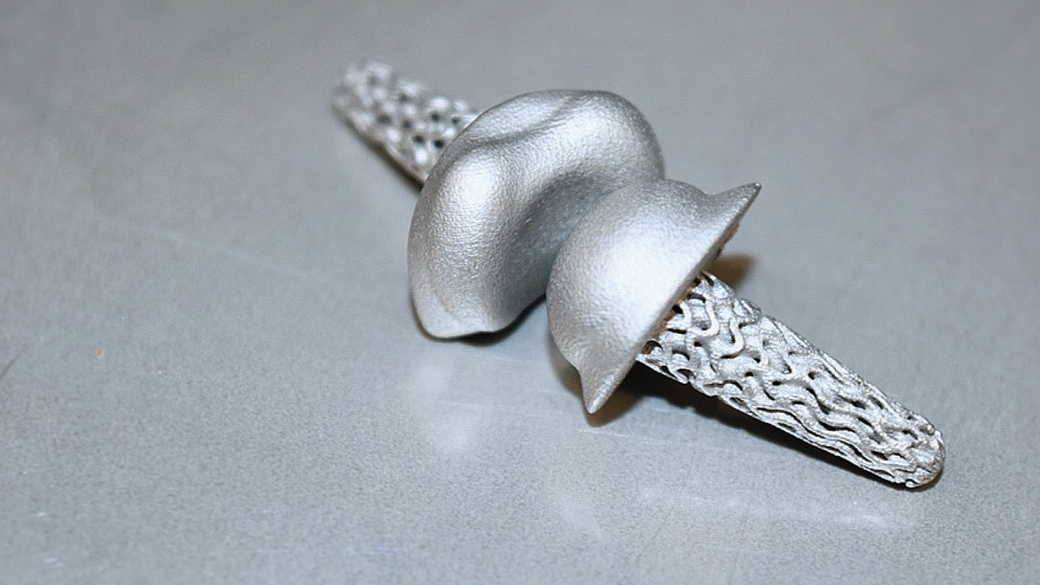The remobilization of impaired finger joints is a future market for needs-based patient care. The "FingerKIt" consortium is developing AI-generated, individualized joint implants from the 3D printer to replace the delicate finger parts if necessary.
Whether due to a sports accident or the widespread disease rheumatoid arthritis, when finger joints become immobile, it is a serious limitation and a physical and psychological burden - for certain professions such as musicians, surgeons or craftsmen, it often even means the end of their career. In future, a development by the Fraunhofer Research Institution for Additive Manufacturing Technologies IAPT, the Fraunhofer Institute for Ceramic Technologies and Systems IKTS, the Fraunhofer Institute for Toxicology and Experimental Medicine ITEM, the Fraunhofer Institute for Mechanics of Materials IWM and the Fraunhofer Institute for Digital Medicine MEVIS could help fingers with damaged or destroyed joints to regain their mobility.
If a finger joint loses its function as a result of an accident or illness, the treatment methods are limited: a custom-fit solution that does not slip and restores the previous mobility - i.e. an individualized implant - should be the goal of optimal treatment. In the FingerKIt project, five Fraunhofer Institutes have now developed a concept that could make this possible: Individualized finger joint implants made of metallic or ceramic materials are to be manufactured quickly, safely and certified in an automated process chain. To this end, the scientists at Fraunhofer MEVIS first developed AI-supported software that is able to calculate three-dimensional models of the finger bones from two-dimensional X-ray images and correct any potential misalignment of the fingers. Researchers at Fraunhofer IAPT then derive the individual implant design from the finger model using AI and implement it in 3D printing. Since very fine and filigree structures have to be reproduced, the scientists work with metal-binder jetting during production, i.e. the layered structure of the parts, which are sintered - i.e. compacted and strengthened - in a subsequent step. At Fraunhofer IKTS, the implants are manufactured using near-net-shape manufacturing - another manufacturing process that produces products as close as possible to the desired final contour so that only a few reworking steps are required. Ceramic materials are also used thanks to the expertise of Fraunhofer IKTS. These are processed using slip casting - a special plaster mold casting process. Fraunhofer ITEM is responsible for questions relating to the biological compatibility and certification of the implants, while Fraunhofer IWM is responsible for simulating the mechanical loads.
The researchers have developed several innovations during their work on the project: The AI-based calculation of a three-dimensional implant design from 2D templates such as X-ray images is completely new and is now patent pending. The process technology is also something special: because the structure of the implant shaft is very delicate, the research teams have used metal binder jetting for titanium as a 3D printing process. The process enables the small, complex implants to be manufactured with great precision and also allows the surface of the shaft to be structured in such a way that it grows better into the bone. It also minimizes the need for post-processing of the joint surfaces, which must be as smooth and low-friction as possible.
Thanks to automated model creation and 3D printing, customized production saves time - 60% of the time until the implant is inserted can be saved. Another advantage is better mobility because the implant is modeled on the original joint.
Source: Fraunhofer Research Compact December 2022


